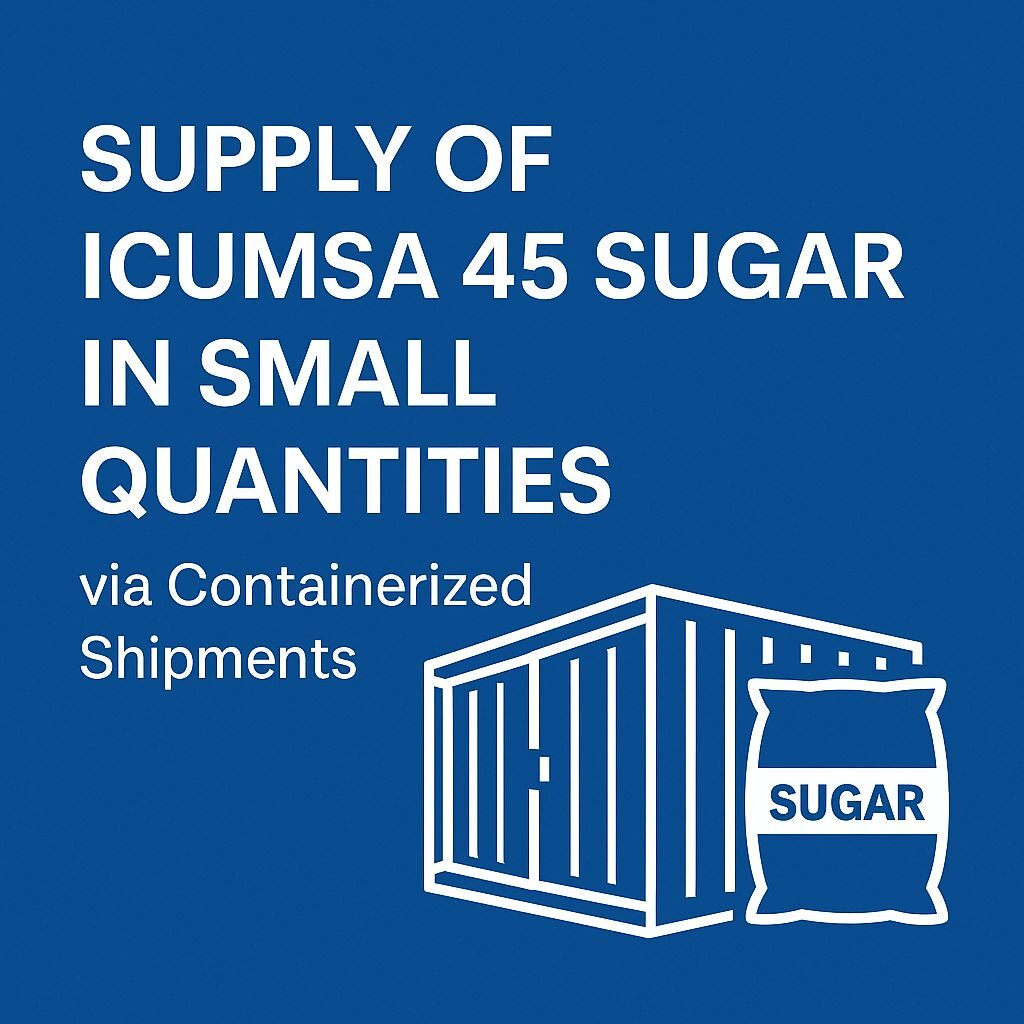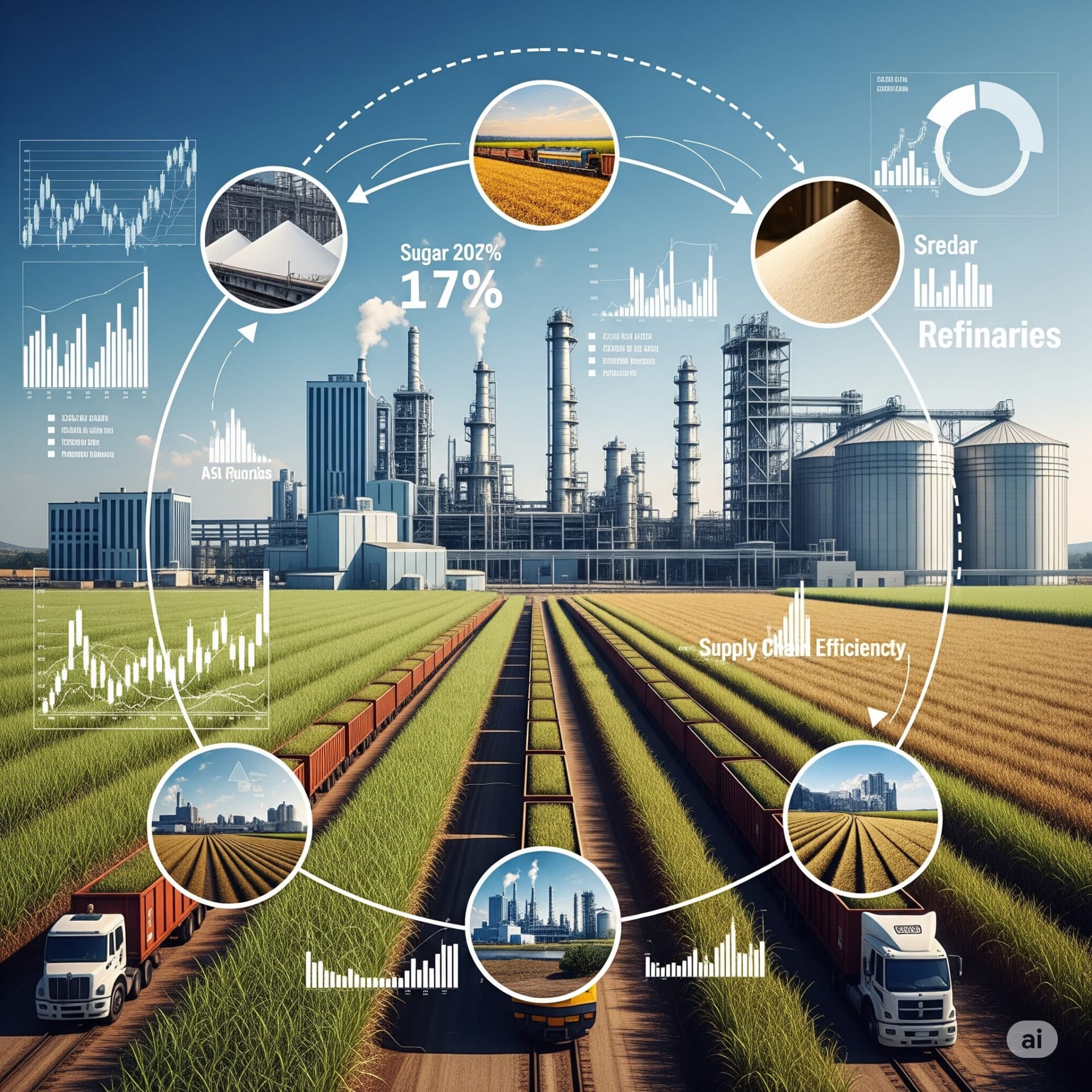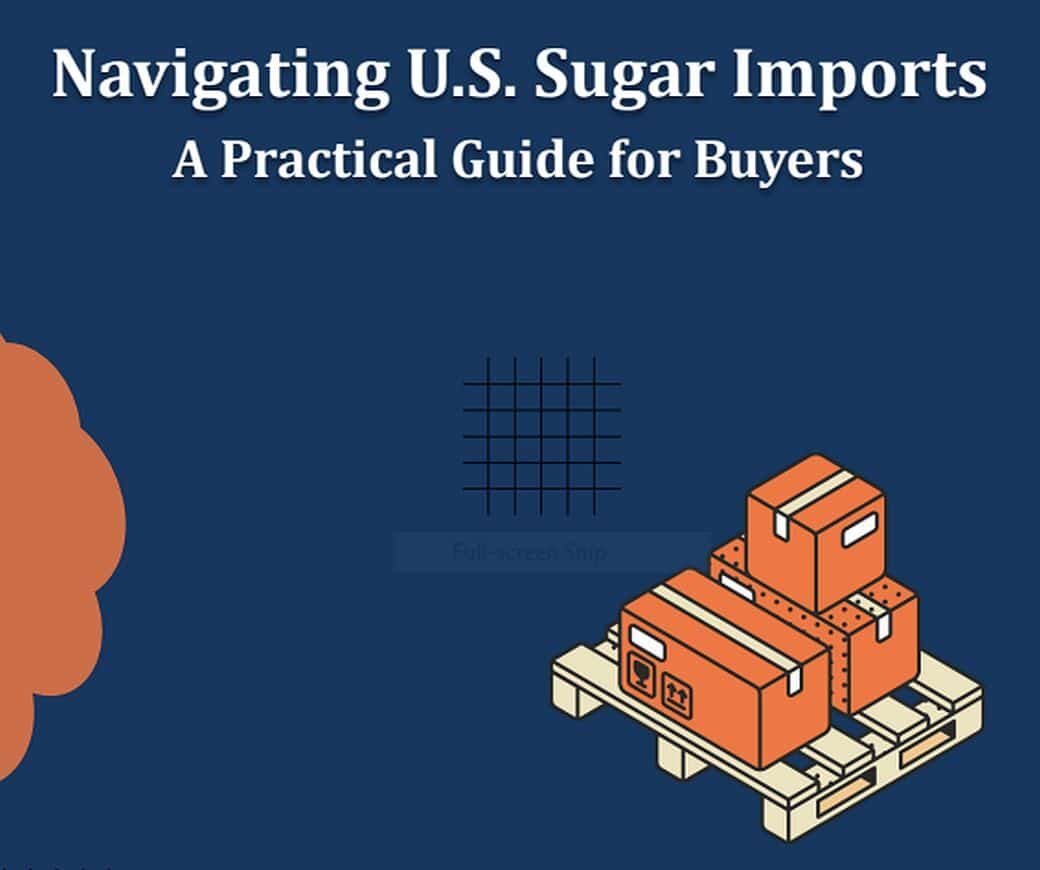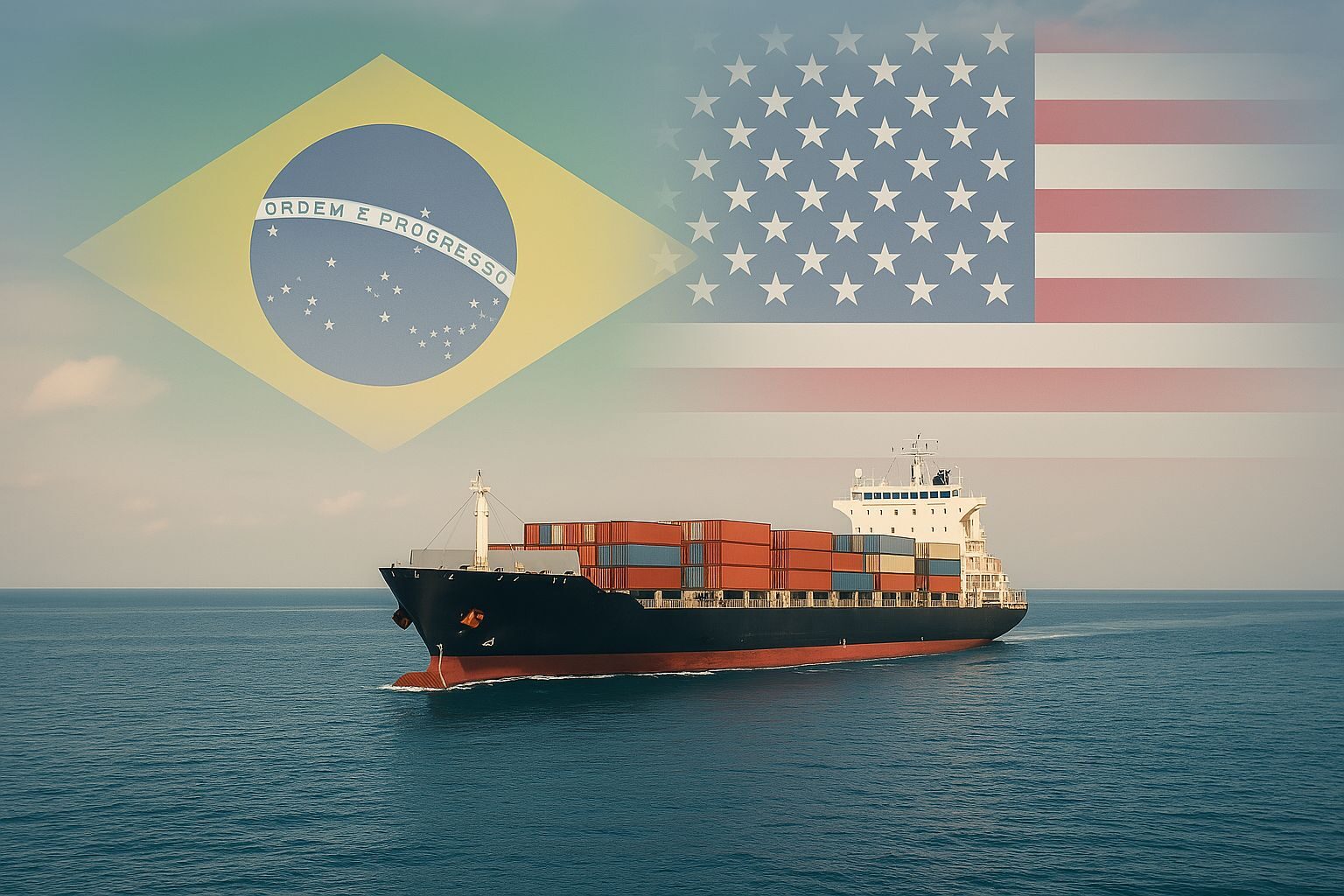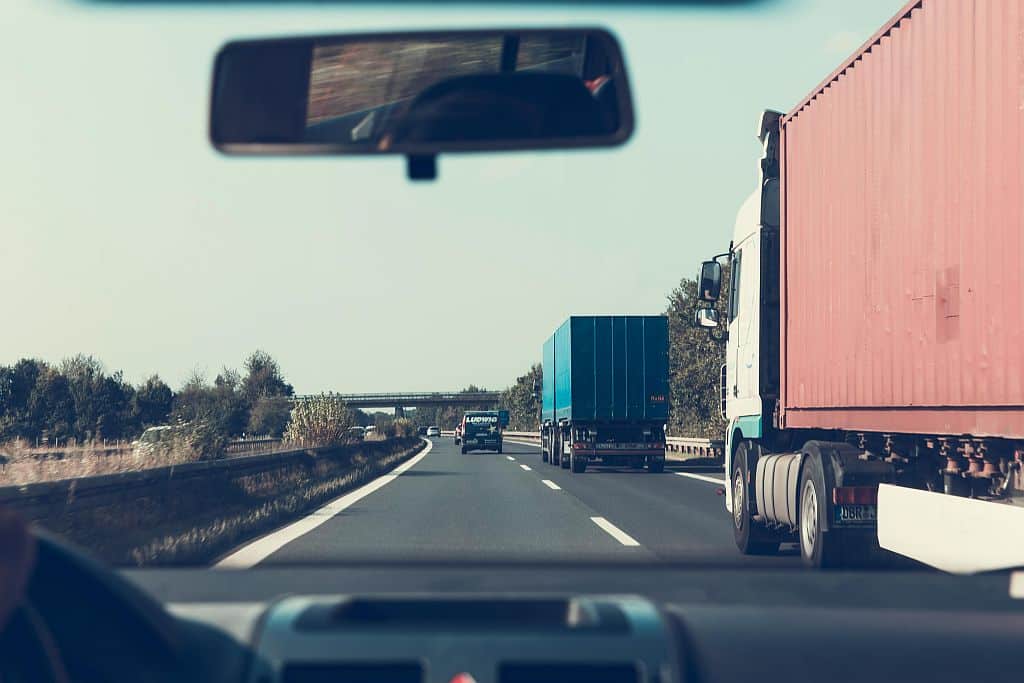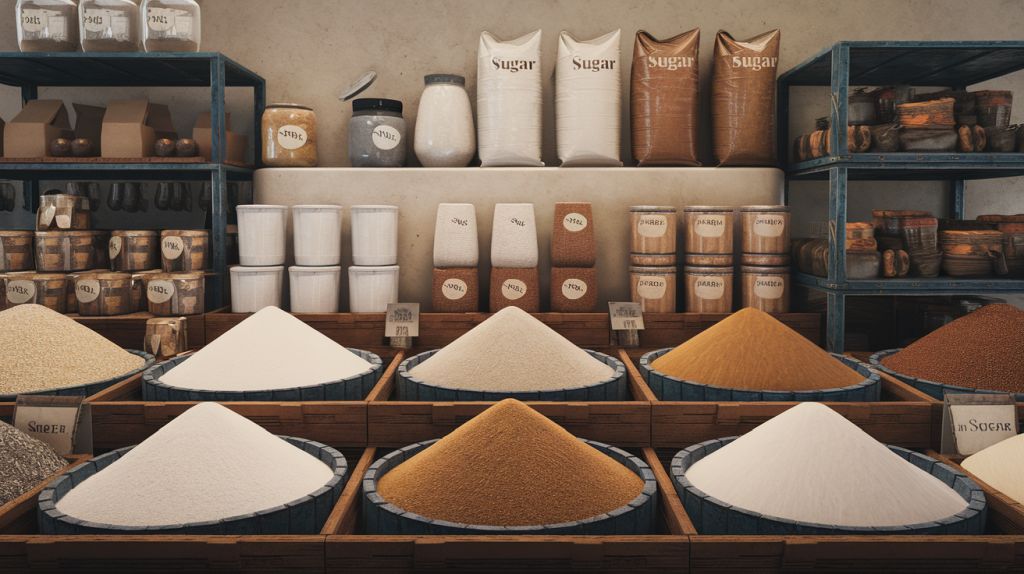Importing sugar into the United States can feel like navigating a maze of quotas, tariffs, and paperwork. Whether you’re a procurement manager sourcing raw materials for a food manufacturer or a compliance officer ensuring every shipment clears customs, understanding how Brazilian sugar moves under CIF, DDP, and OTG terms is critical. In this guide, we’ll cover:
- Why Brazilian sugar is the world’s top choice
- How the U.S. Tariff-Rate Quota (TRQ) system works
- Step-by-step workflows for CIF, DDP and OTG purchases
- Key sugar quality parameters and certifications
- Actionable next steps + free download of the USA Sugar Guide 2025 PDF
Why Brazilian Sugar?
Brazil is the largest sugar producer and exporter on the planet. Its mills offer three main grades:
- ICUMSA 45: Ultra-refined white sugar (≥ 99.80% polarization, ≤ 0.04% ash & moisture)
- ICUMSA 150: Semi-refined white sugar—cost-effective for industrial use
- VHP (Very High Polarization): Raw bulk sugar for further refining
Brazil’s advantage comes from:
- Deep-water ports (Santos, Paranaguá, Suape)
- Integrated rail & highway networks
- Pre-shipment inspections by SGS or Intertek
- Kosher, Halal, Non-GMO, ISO, USDA Organic & Fair Trade certifications
U.S. Sugar Import Regulations
Tariff-Rate Quota (TRQ) System
The U.S. limits sugar imports using a TRQ:
- In-quota sugar enters at zero or reduced duty.
- Out-of-quota sugar faces an 81.2% duty—economically unfeasible.
- Brazil’s annual in-quota allocation: ~156,000 metric tons.
Key U.S. Agencies & Documentation
To clear customs, you’ll need to coordinate with:
- U.S. Customs & Border Protection (CBP): Entry Summary (Form 7501), Bill of Lading
- USDA (TRQ Administration): Quota Allocation Certificate
- FDA: Prior Notice & food import compliance
- APHIS (USDA): Plant/pest declarations
- USTR: Country‐specific quota schedules
Consistent, timely paperwork is crucial: Commercial Invoices, Packing Lists, Certificates of Origin, SGS inspection reports, and more. Any delay can trigger storage fees or penalties.
Incoterms in Practice: CIF, DDP & OTG
CIF (Cost, Insurance & Freight)
Under CIF, the seller pays for shipping and marine insurance to the U.S. port. The buyer assumes risk once cargo passes the ship’s rail and handles customs clearance, duties, FDA/APHIS filings.
- Buyer issues ICPO with KYC & specs.
- Seller sends FCO (Full Corporate Offer).
- Both sign contract; buyer opens LC (MT700).
- Seller arranges shipping, insurance & SGS/Intertek inspection.
- Buyer clears U.S. customs; bank releases funds via MT103.
DDP (Delivered Duty Paid)
With DDP, the seller handles everything: shipping, insurance, customs clearance, duty payment, and delivery to your warehouse. The buyer pays via SBLC (MT760) or MT103 upon receipt of documents.
- Buyer issues ICPO and KYC.
- Seller issues FCO; both sign contract.
- Buyer provides SBLC; seller confirms and issues Proof of Product.
- Seller books shipment, handles SGS inspection & marine insurance.
- Seller clears FDA/APHIS & delivers duty paid; buyer pays via MT103.
OTG (On-the-Ground Delivery)
OTG sugar is already imported, duty-paid, and stored in U.S. warehouses. Buyers simply place a PO, pay upfront, and take delivery EXW or arranged transport.
- 3–5 business days turnaround
- No TRQ or customs risk
- Flexible split loads from East, Midwest & West Coast warehouses
Choosing the Right Delivery Model
Consider your:
- Order volume: Large imports may leverage CIF + TRQ.
- Import expertise: Novices often prefer DDP or OTG.
- Lead time: OTG is fastest.
- Banking instrument: CIF uses LCs; DDP uses SBLCs; OTG uses wires.
- Total landed cost: Duties, storage, inland freight, banking fees.
Sugar Quality, Specifications & Packaging
- ICUMSA rating: 45, 150, VHP (600–1200)
- Polarization: ≥ 99.80° for ICUMSA 45
- Moisture & ash: ≤ 0.04%
- Certifications: Kosher, Halal, HACCP, AIB, ISO, Non-GMO, Organic
- Packaging: 50 kg UV-treated bags, 1 MT jumbo bags, lined containers
Download the USA Sugar Guide 2025 PDF
Dive deeper into workflows, FAQs, and a glossary of 50+ terms. Get your free copy now:
▶️ Download USA Sugar Guide 2025 (PDF)
Disclaimer: This post is for informational purposes only and does not constitute legal or financial advice. Always consult your own advisors before entering into sugar import contracts.

